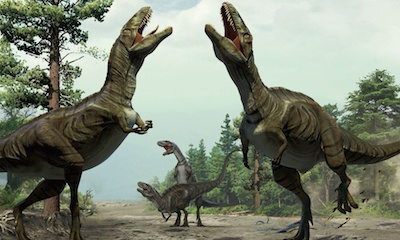-
Tips for becoming a good boxer - November 6, 2020
-
7 expert tips for making your hens night a memorable one - November 6, 2020
-
5 reasons to host your Christmas party on a cruise boat - November 6, 2020
-
What to do when you’re charged with a crime - November 6, 2020
-
Should you get one or multiple dogs? Here’s all you need to know - November 3, 2020
-
A Guide: How to Build Your Very Own Magic Mirror - February 14, 2019
-
Our Top Inspirational Baseball Stars - November 24, 2018
-
Five Tech Tools That Will Help You Turn Your Blog into a Business - November 24, 2018
-
How to Indulge on Vacation without Expanding Your Waist - November 9, 2018
-
5 Strategies for Businesses to Appeal to Today’s Increasingly Mobile-Crazed Customers - November 9, 2018
Dinosaur diagnosed with severe arthritis – 70 million years after its death
Septic arthritis, as it seems, is an age-old affliction that doesn’t just affect humans and some present-day animals.
Advertisement
“There are signs of both bone destruction and excess bone growth that resulted in possible fusion of the elbow”. The bones had a cauliflower-like growth on them.
Anné said that the dinosaur might have passed through a lot of pain.
“It probably had a partially bent arm with either little or no movement at the elbow, kind of like Igor from ‘Frankenstein.’ It also probably would have had a limp”, said study first author Jennifer Anné, who recently completed her PhD from the University of Manchester in Britain. A micro computed tomography (micro-CT) scanner at Harvard University enabled the team to look through the rock and bone and see what was inside.
Researchers from the University of Manchester have teamed up with the New Jersey State Museum and the University of MA to diagnose a dinosaur from the U.S. with a horrific medical condition.
“The X-rays are much more powerful, so they can punch through the dense fossil”, she told Live Science in an email. “[But] fortunately, our patient [was] already dead”. The new study was published online today (Aug. 3) in the journal Royal Society Open Science.
According to New Scientist, the detailed micro-CT images helped the researchers diagnose the duck-billed dinosaur (or hadrosaur) and its bad case of septic arthritis. It is noted that the fossils examined were extremely fragile and could disintegrate into dust once touched.
New Jersey is an archeological site that has yielded many scientifically significant fossils before and the latest discovery also provides more insight into the diseases experienced by the animals millions of years ago.
Likely a duck-billed dinosaur, hadrosaur has been New Jersey’s state dinosaur since 1991.
Once inside, they compared the dinosaur’s symptoms with those seen in other animals, and ultimately concluded that their specimen suffered from septic arthritis.
Advertisement
An evidence of septic arthritis – an especially nasty form of the disease caused by infection and known to afflict modern birds, crocodiles and human beings – was found in the X-ray analysis of the fossilized elbow joint. The finding is quite important because of two reasons: first, ancient diseases and injuries – Palaeopathology – are fairly rare in the fossil record and secondly such diseases and injuries are even rarer in dinosaurs from the East Coast of North America.




























